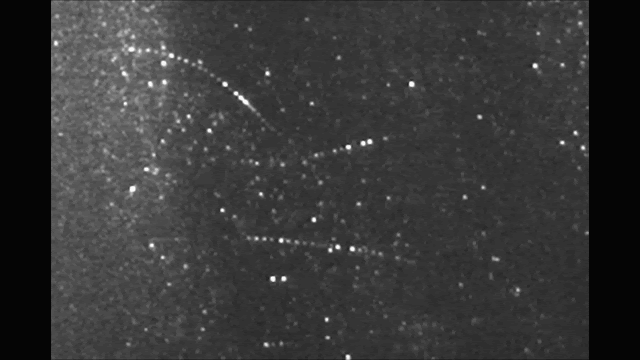Superfluid Corotating pair
Counterflow of Superfluid Helium and Turbulent Decay
Helium 1, 2, and superfluid helium 3, are undetectable in outer space, just like dark matter CDM observation theories. He3 is colorless, odorless, invisibly transparent to light. A spinning supermassive superfluid He3 surface radiates wide types of radiation, with a hot accretion disk bilayer ejecting hot dusty impurities. The superfluid's container in space are strong magnetic fields and pressures at galaxy centers, not black holes.
The CMB is -270 celsius 400 million years after the big-bang. He3 superfluid superconducting phase change state is -271 celsius in labs. A phase change into He3 of a huge amount of gas is what the big-bang is really all about. These temperatures are clear evidence of a big chill.
Superfluid helium 3 spins friction free, having zero viscosity, zero entropy, and zero heat energy. The temperature is uniformly distributed throughout by collective behavior of helium 3. Superfluid helium is more than a mathematical analog and mimic of "black holes" and special relativity. What are unexplainably called "black holes" is mostly cold superfluid helium 3, and perhaps with a supersolid helium core. Helium is the second most abundant element in the universe, representing 25% the mass of all atoms. The artificial and real mimic of unseen inferred "black holes" is gravitational special relativity, which predicted everything not found, including dark matter and gravitational interpreted black holes as being real.
Helium 3 super fountain defies gravity, as a friction free superflow, it will last forever. Helium 3 violates the second law of thermodynamics, by flowing from cold to hot temperatures, with zero viscosity, zero entropy, and zero heat. It passes through the tinniest pores, even just an atom thick. Galaxies like stars are connected together like beads on strings inside cold thin vast filaments, containing superfluids traveling from cold to hot regions.
Notice the dusty tails of galaxies spin and rotate on the dusty fermi surface. Curved vortex like container boundaries shapes the galaxy tails, that contact the dusty surface of an enormous amount of collective behaving helium 3 superfluid.
It's a galaxy with extremely cold filaments, where stars are observed to form like beads on strings. Evidence grows that the cores of stars, nebulas, and galaxies, are near absolute zero. Protostars begin life inside cold filaments by a phase change of gaseous helium into helium 1 and helium 2, typically lasting a few thousand to millions of years to form a star. Helium 2 has both a normal and superfluid component. Helium 3 is entirely a superfluid.

















No comments:
Post a Comment